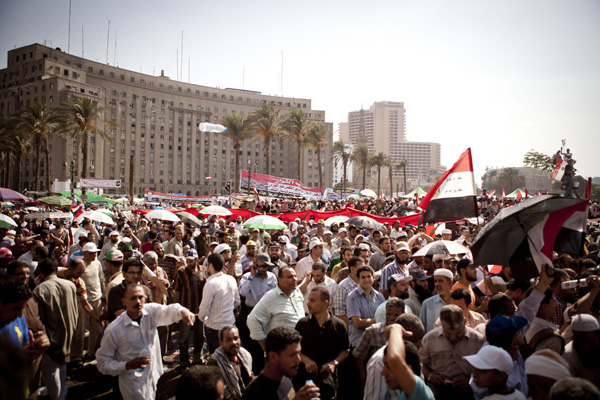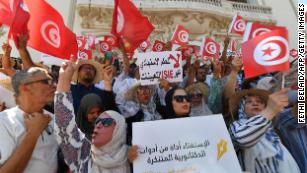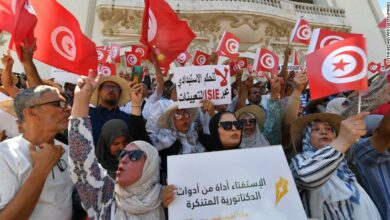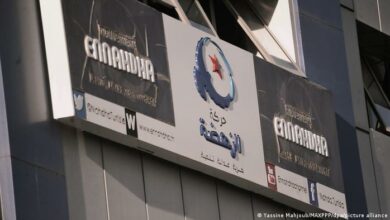
Its essence is in its name: Jadaliyya, stemming from the Arabic word jadal, which means dialectic. Put simply, the word denotes a healthy debate using logical arguments or an intellectual investigation of an issue.
The name sets the tone for the website. Jadaliyya, founded just months before the Arab uprisings by a group of academics, quickly became a port of call for many wanting to understand the tumultuous events unfolding across the region.
With daily analysis, increasingly in Arabic as well as English, Jadaliyya offered more nuanced, in-depth coverage than most, but without the delays and exclusivity of academic journals.
“The Dawn of the Arab Uprisings: End of an Old Order?” published by Pluto Press is a collection of articles published on the website in the first months of the uprisings. Jadaliyya’s importance lies both in its analytical strength and political commitment. It combines sophisticated and informed analysis with what Adam Hanieh — one of its contributors — described as “a political commitment to a project of emancipation.”
Jadaliyya is avowedly partisan, positing a relationship between academia and the world about which it writes and from which it sustains its existence, where scholarship’s credibility comes not from claims of being objective but from being engaged.
Both scholarly and accessible — simplifying language, not ideas — it has implications on both journalistic and academic writings in the region. In terms of bridging that gap, some articles are unsurprisingly more successful than others.
The book is a collection of more than 30 articles published on the website in the first few months of the Arab uprisings. While not intended to be exhaustive, the book does offer a wide breadth of analysis geographically, and aims to address the silences or gaps in more mainstream analysis.
Organized by country, rather than thematically, the collection does not set out to offer an equally in-depth analysis of each country. Rather, in the words of co-editor Ziad Abu-Rish at the book’s launch at the London School of Oriental and African Studies this week, (the other co-editors are Bassem Haddad and Rosie Bsheer), its unevenness is itself a document of the unevenness of the field of Middle East studies.
The nine sections include Tunisia, Egypt, Libya, Bahrain, Yemen and Syria, with a section dedicated to regional reverberations that broadens the analysis to countries less directly affected by the uprisings. An opening section sets the stage, addressing questions such as the terminology of revolution, the historical nature of the moment, and the problematic nature of dominant discourses about the uprisings.
The longest section is that on Egypt, with seven chapters, some published before Mubarak had stepped down. As with the rest of the book, the analytical tools and focal points are diverse. An essay by Elliot Colla published within a week of the beginning of the uprising discusses the importance and centrality of poetry.
Also published during the 18 days is Paul Amar’s piece discussing social actors and movements as well as charting a conflict between the military as “national capitalists” and the neoliberal “crony capitalists” associated with Gamal Mubarak. Walter Armbrust’s “The revolution against neoliberalism” in which he warns against technocratic “transitions,” and Adam Hanieh’s discussion of how the aid and investment initiatives on offer will only deepen Egypt’s neoliberal experiment and represent a restraint on the revolution were also widely read.
Omnia El-Shakry seeks to understand 2011 by looking at the continuities and discontinuities with previous moments of popular mobilization in Egypt, the revolutions of 1919 and 1952. An article by Saba Mahmood covers a range of questions from the purported leaderless nature of the uprising to labor protests and the blogosphere.
Meanwhile, Linda Herrera explores the blogosphere and the role of social media such as Facebook. Exemplifying the best sort of analysis offered by Jadaliyya, she is clear that there can be no such thing as a Facebook revolution, whilst also offering detailed analysis about the generational and demographical aspects of the use of social media and what this heralds for Egypt’s political and cultural life.
Collectively, the articles offer informed analysis of the region, one that challenges Eurocentric approaches and incorporates political economy, as well as taking account of each country’s regional and international positioning.
Stepping away from grand metanarratives, the book looks at divergences across countries. A certain understanding emerges from the collection: to make sense of the different trajectories of these countries, we should look at the level of regime cohesion, societal dynamics, as well as regime-society dynamics, and tie all of this into an analysis that also has a regional and international perspective.
The book warns against “overstating the affinity” across the Middle East, calling instead for a focus on the “significant differences among these polities, in terms of social structure, political-economic, ethnic, regional, social, and sectarian diversity.”
In the introduction, the editors cite Syria as a particularly complex case, pointing to the regional and strategic significance of the country, as well as the failures of the opposition. Though shorter than the sections on Egypt and Tunisia, the Syria section combines a variety of writing, in itself one of the main strengths of the collection.
An article by Bassam Haddad, whose forthcoming book on Syria’s political economy explores the relationships and crossovers between business networks and the regime, contrasts Syria with other states in the region that have seen unrest. A contribution “Fear of Arrest” by an anonymous activist found in Arabic on a Facebook page of a local coordination committee is translated and prefaced by a discussion on what it means to read a text like this from a distance.
The final section of the chapter is part of what was a series of articles by a Syrian-American, written under the pseudonym Amal Hanano, about going back to Aleppo during the uprising, and engaging in particular with middle-class attitudes in Syria’s second city.
At the book’s launch, Hanieh framed the book as a challenge to the two main positions in current popular discourse, both in policy and activist circles.
The first sees the revolutions as complete and understands the contemporary moment as one of a transition to democracy. The other, in contrast, understands the current moment as one of continuity; it takes the position that change has been superficial, and that no substantive change has, as yet, occurred.
Hanieh suggests that these perspectives are two sides of the same coin, in that they both see the Middle East simply as outcomes of geopolitics. They fail to engage with struggles and new social forces.
The book itself is a kind of document or archive. Abu-Rish describes it as an archive of a variety of reactions from activists and scholars as developments unfolded in the Middle East.
The foreword, written by prominent Middle East historian Roger Owen, discusses the importance and challenges of archiving the uprisings. As Owen writes, “Collections have a way of reducing their once vibrant artifacts and memorabilia into a discrete set of lifeless objects once the context that produced and sustained them has disappeared.”
This collection is unlikely to be lifeless — the moment it documents is a very particular one, during which, as the editors write in the introduction, “what had seemed improbable became reality.”
And in this spirit of documentation, the collection includes articles whose analyses have not been played out in full. When the impossible became possible, once-held truths, both within the region and in writings on the region, became unstable.
It was a moment of hope and optimism shared by many of the contributors to the volume. In that moment, the field of possibility seemed to have exploded in all directions, yet the publication comes at a time when that has imploded, and the previous optimism seems to have been misplaced as a creeping pessimism sets in.
The book returns to those “first irretrievable moments” and then charts a “multi-pronged, ruthless counter-revolution” of local, regional and international actors, while also asserting that there has indeed been profound change.
The moment remains one of historical magnitude, even if it does not lead to the complete undoing of authoritarian regimes across the region. It spelled a change in political subjectivity, with different levels of participation and non-participation taking millions through a life-changing experience.
Barriers of fear were broken, or pulled apart, whether on the level of going out to the streets, or at the levels of thought and speech. Public debate in many countries has dramatically changed, with more people than ever partaking in conversations about their fate and the powers that affect their future.
For many regimes, Adam Hanieh says, “the specter of mass protest” will remain a fear; no longer can the masses of the region be taken for granted.
This profound change is encapsulated in Mouin Rabbani’s description of 2011 as “the year of the citizen.”
Or, as Rashid Khalidi asserts in a chapter that discusses the commonalities between the uprisings and previous struggles, “after a night seemingly without end, a spirit of liberation has been unleashed in the Arab world.”




